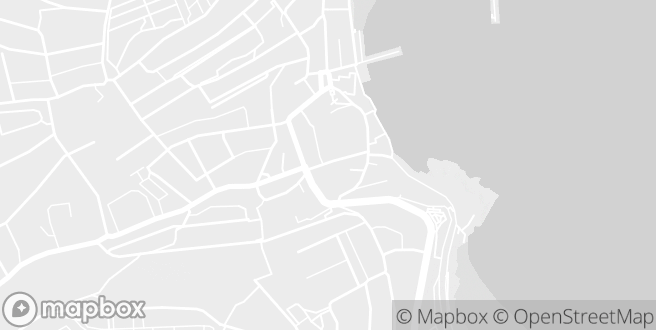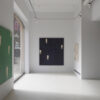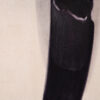Anima Mundi is delighted to present ‘Murmurations’, Sam Lock’s second solo exhibition at Anima Mundi, consisting of a monumental body of work consisting of gestural and contemplative painting, sculpture and drawing, which oscilitate between states of presence and absence.
A 2013 study into the awe inspiring, murmuration phenomena of starlings, discovered that the synchronised flight behaviour did not result from each and every bird having an awareness of the placement of each and every other bird in the flock. Instead, from their studies and mathematical models, researchers were able to deduce that each bird only maintains close collaboration with seven of its very closest neighbours, ignoring all others. When each of these sub-groups of seven touch on other individuals and groups, the spectacular twists and turns quickly spread. From that, a whole murmuration moves in unison as one. I am reminded of the following quote by Simone de Beauvoir in ‘The Blood of Others’; “I cannot withdraw into myself. I exist, outside myself and everywhere in the world. There is not an inch of my path which does not encroach on the path of another: there is no way of being that can prevent me from overflowing myself at every moment. This life that I weave with my own substance, it offers other men a thousand unknown faces, it crosses impetuously their fate.”
For Sam Lock the laying down, or indeed with this body of work, the chiselling of an independent mark, is both a solitary event and part of a wider interconnected process. Lock is interested in the making of marks that communicate both instantly and slowly through a filling up and emptying of space and surface. The collective of these traces become a palimpsest. The making of marks is a meditation on the continual flow and movement that exists both around and within, transferred to material through gesture, which then becomes transferred once again into a poetic and meditative form of communication. Each mark is not made with a fixed system or process in mind, but through an energy that embraces both flux, chance and intuition, in a manner that is both organic and unscripted, following its own path until there is balance or unity.

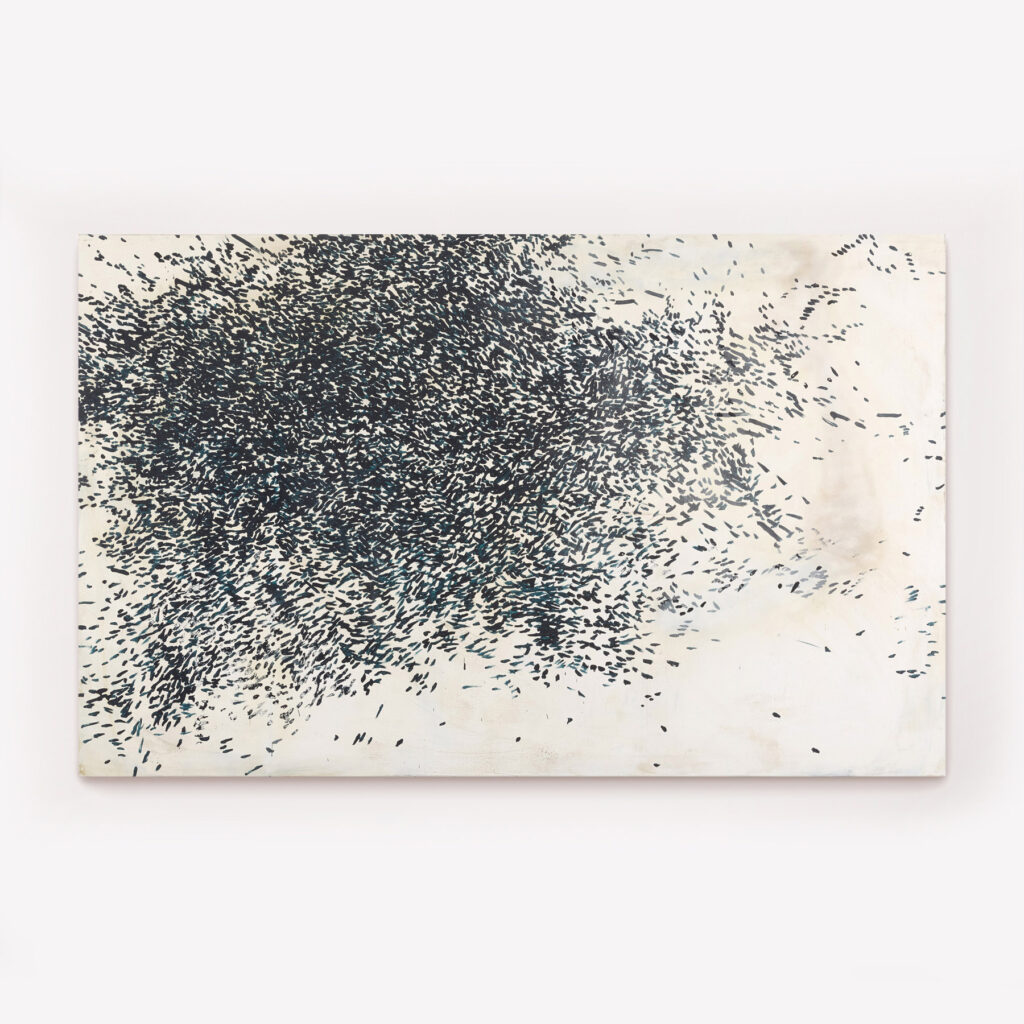
For Lock, this balance or unity perhaps has something to do with the presence or activity coalescing with space or absence, where moments of noise are poised alongside moments of silence. This exhibition is marked by its inclusion of recent limestone block sculptures, where this presence/absence is represented through gouged marks alongside the physical removal of matter. Where Lock describes, “what is left tells the story of its unmaking,” stopping only when the form becomes poignant in some way.
Another feature of the exhibition is the delicate and sensitive works on book covers and book pages. The source material becomes a starting point that already murmurs about its past, patinated with age-related marks and history, and providing a context to shift and move on from. The book covers shown on shelf displays connect to create variable sequences—an unknown story with endless possible variations or forms, reminiscent of what Seamus Heaney once called “The music of what happens.” The framed book page works have a title at their center (pages from deconstructed books of The World’s Greatest Paintings), which refers to an image from which they have now become lost or separate. Lock’s marks obscure their former purpose and paint a different future, albeit traced from and connected to its past.
Perhaps most aesthetically redolent of the title of the exhibition are the larger-scale, incredibly immersive paintings in mixed media on canvas. Mark upon mark becomes a murmuration of events symbolizing what Lock has previously called “a forest of memory.” As he also previously stated: “The present is everything, as it is where all of our actions exist, but it has no fixed form – instead moving and shaping itself exactly in the non-existent space between the future and the past… The artworks are a monument and marker to the ever-present, present moment, helping to give a physicality to all that is fleeting.”
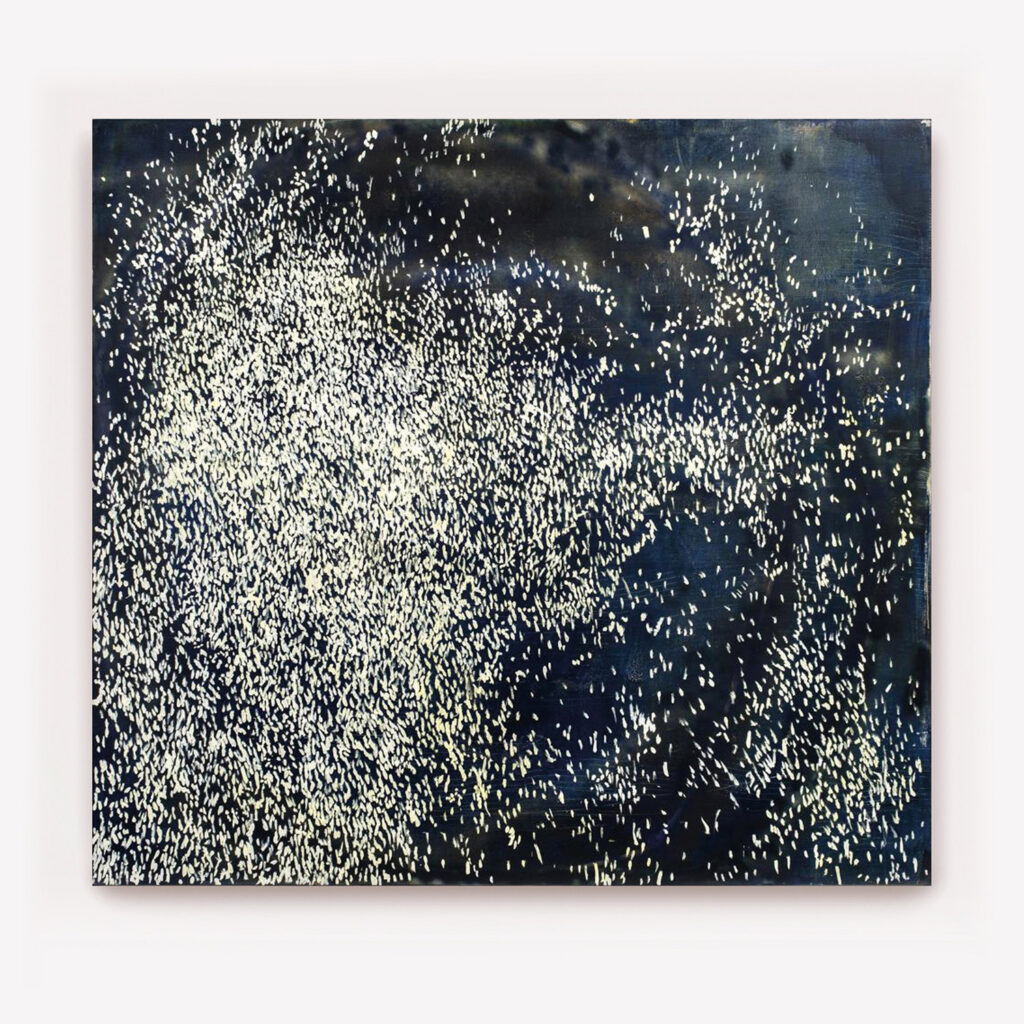

This mighty and extensive exhibition is a hymn to the unknowing interconnection between all action and reaction. We live in a day and age where the stakes of this fact are oh so very worryingly high. As Alan Watts once wrote: “…everything in nature depends on everything else. So it’s interconnected. And so the many, many patterns of interconnections lock it all together into a unity, which is, however, much too complicated for us to think about, except in very, very simple, crude ways. But I am part of all this. I am, as it were, one of the cells in this tremendous brain, which I can’t understand because the part can’t comprehend the whole.”
As with each individual starling in the swooping liquid sky, we must attempt to go about our business with purpose, love, hope, and positivity, and, as with the flap of a butterfly’s wings, have faith that there are repercussions which may well help to create a shift in the wider flow of the flock.
Joseph Clarke, 2025
© Text and Photo Courtesy of Anima Mundi Gallery
